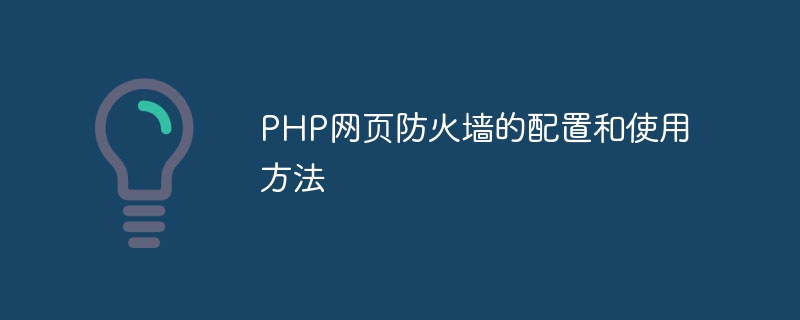

How to configure and use PHP web firewall
With the development and popularization of the Internet, web security issues have become increasingly prominent. Attackers may use various means, including SQL injection, cross-site scripting (XSS), etc., to conduct malicious attacks and intrusions on web pages. In order to protect the security of web pages, we can use PHP web firewall to configure and use it.
PHP web firewall is a tool used to filter and block malicious requests. It protects web pages and servers by detecting and filtering out potential attack requests. The following is an introduction to the configuration and use of PHP web firewall.
1. Install PHP web firewall
2. Configure PHP web firewall
3. Use PHP web firewall
require_once('firewall.php');
if (isset($_GET['id'])) {
$id = $_GET['id'];
if (!firewall_sql_injection($id)) {
echo "Invalid parameter";
exit;
}
// continue processing}
By configuring and using PHP web firewall, we can greatly improve the security of web pages. Of course, firewalls are only a small part of web security and should also be combined with other security measures, such as using secure passwords and regularly updating software. Only by comprehensively protecting the security of web pages can we better resist various malicious attacks.
Summary
PHP web page firewall is an effective tool to protect web page security. Through configuration and use, we can filter and block malicious requests and protect the security of web pages and servers. When using a firewall, you need to pay attention to the settings of the configuration file, the formulation of firewall rules, and the testing of its functions. I hope this article will help you understand the configuration and use of PHP web firewall.
The above is the detailed content of How to configure and use PHP web firewall. For more information, please follow other related articles on the PHP Chinese website!




